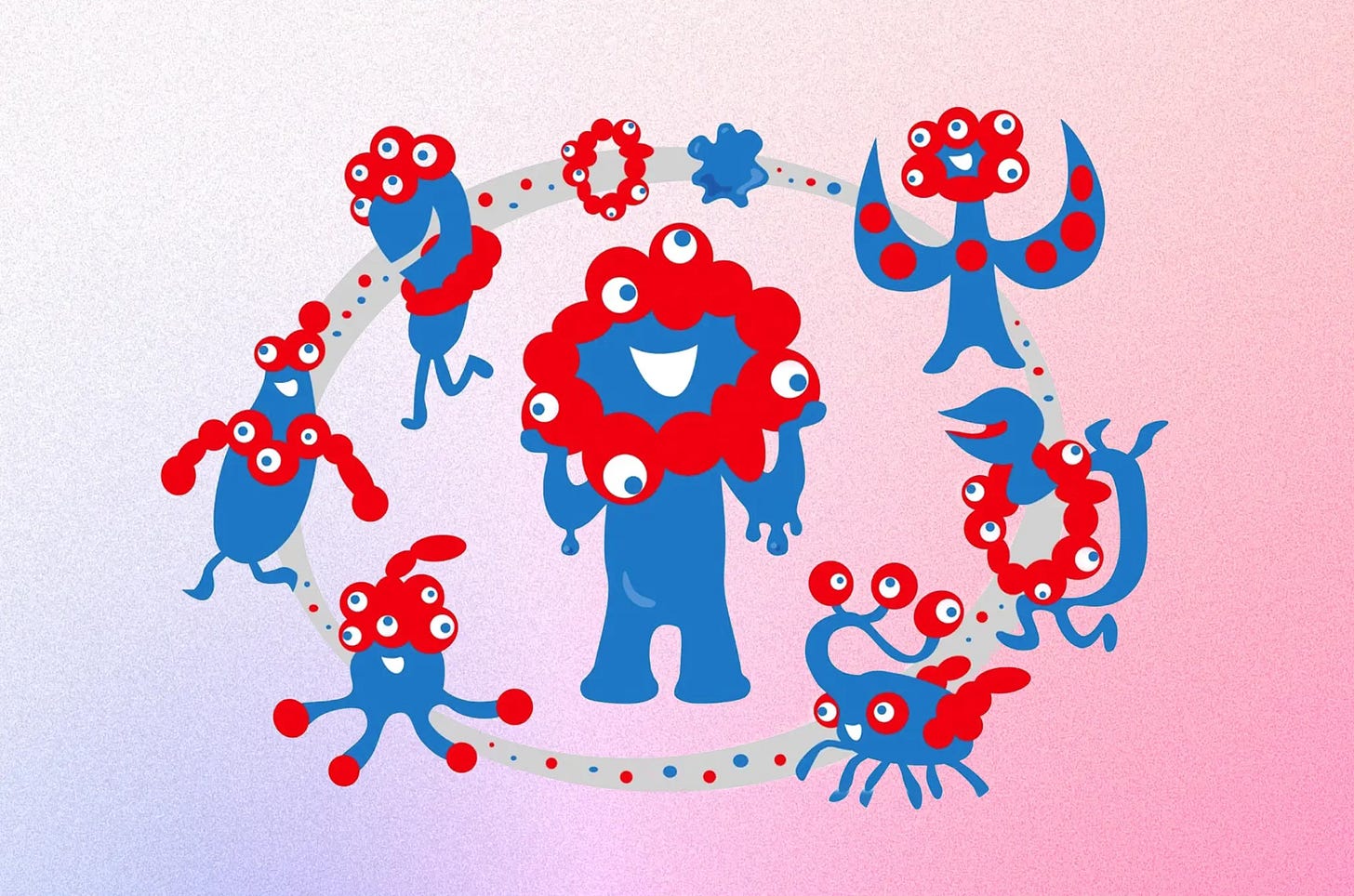
Hello from late April. This week’s side quest is a visit to the Letterform Archive in San Francisco, recommended by the one and only Robin Sloan.
Speaking of Sloan, don’t miss the reprint of his mail-order zine—as I type these words, 243 copies remain.
Here are five fragments that stuck with me last week…
as more of my search traffic moves to AI it's interesting to observe which categories i still prefer reddit for — like where i’m not just looking for answers but also some acknowledgement that these are shared human experiences
– Rishi Mody on X, April 20, 2025. Same! LLMs: better for sympathy than empathy.
For a time, balloons were big business. Lunardi and Blanchard sold tickets to their launches and to exhibitions of their equipment. And the balloon craze sparked a fashion craze, too. Women wore balloon-shaped hats and bonnets and dresses, along with balloon-emblazoned fans, purses, and umbrellas. Men had balloon-themed waistcoats and pantaloons. Almost everything with a flat surface was decorated with the image of a colorful balloon: chairs, desks, bowls, plates, napkins, tables, clocks, couches, bureaus. In the air or on the ground, ballooning was in vogue.
– Jason Pearl, “Hot-Air Balloons Are Useless,” The Atlantic, July 15, 2018. Found my way to this article by asking ChatGPT for an interdisciplinary syllabus for a semester-long course on hot-air balloons—still one of my favorite prompts. Enchanted by this basket of details from the Balloonomania craze of the late 18th century. Turns out Jason’s writing a whole book on hot-air balloons.
After the Cornwall spill, Dr. Ebbesmeyer reached out to Lego to ask what had been on the ship. The company sent him an inventory, along with a sampling of the kinds of pieces that had been in the container. He promptly tested them in his bathtub for buoyancy and found that half of the pieces floated.
That difference could account for the missing Lego pieces that fell off the Tokio Express in 1997 and have yet to surface. Ms. Williams said she regularly spoke to fishermen who discovered the pieces as they trawled the bottom of the ocean. A Lego shark, one of 51,800 that were in the container, was caught in a fisherman’s net 20 miles off the Cornish coast in late July. It’s the first of the sharks to see daylight in 27 years.
“Only another 51,799 to find,” Ms. Williams wrote on the Lego Lost at Sea account.
– Aimee Ortiz, “Dragons and Sharks on a Beach Near You: The Story of the Great Lego Spill,” September 1, 2024. This article from last fall somehow surfaced in my feeds and caught my eye—especially timely since I’m back to chipping in on chipping away at the massive LEGO set my 6-year-old got for his birthday. The first of the sharks to see daylight in 27 years struck me as especially poignant, and reminded me of the anglerfish meme that circulated a few months back.
@coldhealing: When I was anthropologizing the "old money aesthetic" I followed Rothschild descendants on Instagram and it's funny how different true elites post from roleplayed elites. They never post curated photos of a tea set, they post their cousins and blurry pics of European hills
@kilomanjaroe: Every mega wealthy I have met in nyc had an IG pics of just street corners or a rat in subway.
@coldhealing: They've seen the nicer things before. The rats are always different
– @coldhealing on X, April 18, 2025 (and replies). Might just be a new entry in my personal canon.
Japan’s love affair with mascots is the stuff of legend. Think Kumamon’s cuddly bear vibes or Funassyi’s silly pear antics. But now, with Expo 2025 Osaka set to begin on April 13, a new contender has wobbled onto the scene: Myaku-Myaku, a googly-eyed, shape-shifting blob that’s as bewildering as it is unforgettable.
– Ynes Sarah Filleul, “Myaku-Myaku: The Googly-Eyed Mascot of the Osaka Expo 2025,” March 28, 2025. World’s fairs have been an evergreen fascination for me—I wrote my longest paper in high school on the 1939 New York World’s Fair, and my senior thesis in college on the 1895 Cotton States and International Exposition in Atlanta. I first heard about the Osaka World Expo in this melancholy article from The New York Times about how world’s fairs aren’t what they used to be. The article pointed to Myaku-Myaku as one of the few successes of the Osaka endeavor, which sent me down a side trail of learning how their mascot came to be.
Until next time,
Diana
https://dianaberlin.com



So pleased to have found your newsletter here randomly (well, via Robin) again. Your article No More Forever Projects continues to be one I shared with interns and readers stuck in a loop of forced future thinking. Such a meaningful piece in my life!